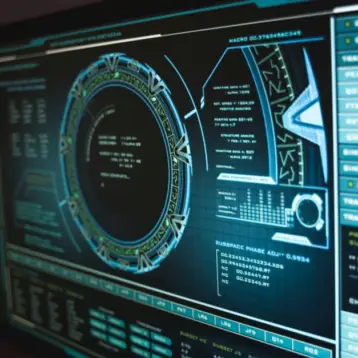US Missile Defense personnel at Edwards Air Force Base in California have successfully tested the Lockheed Martin Beam Control/Fire Control system in conjunction with the High Energy Laser mounted on a modified Boeing 747-400F airplane. Together, these components form the Airborne Laser (ABL), a new system capable of destroying ballistic missiles from the air. The Lockheed Martin system successfully focused and directed the laser beam through a window on the nose of the plane into an external diagnostics system.
The Airborne Laser program is a joint project of the United States Air Force, Boeing, Northrup Grumman, and Lockheed Martin, run under the auspices of the US Missile Defense Agency at Kirtland Air Force Base in New Mexico (Boeing is the head civilian contractor). The system consists of the Northrop Grumman-built High Energy Laser (a chemical oxygen-iodine laser), the modified Boeing airplane, the Boeing Battle Management System, and this Lockheed Martin control system. Northrop Grumman also built one of the low powered lasers incorporated into the Beam Control/Fire Control system and supplied some of the ground personnel required to manage the system.
The Beam Control/Fire Control system locates and tracks targets, determines the range to targets, and compensates for atmospheric turbulence. It uses two low powered lasers – the Track Illuminator Laser and the Beacon Illuminator Laser – to figure out where to point the High Energy Laser. The High Energy Laser passes through the control system on its way out of the plane, and one of the major requirements of the system is that it maintain the laser’s focus while continuously tracking a target.
Previous ground-based tests using a substitute laser proved that the Lockheed Martin system can maintain a beam’s focus while tracking targets. The recent tests were the first exercising the Beam Control/Fire Control system in conjunction with the full complement of ABL components, effectively passing the real High Energy Laser through the nose of the Boeing plane into an external diagnostics system simulating real world conditions and measuring system performance.
The ABL system should be capable of destroying a missile during its boost phase while it is still accelerating and before it has deployed any warheads, from a distance of up to several hundred kilometers. Current tests of the system, including the recently concluded Beam Control/Fire Control system tests, have all been ground based. Further ground tests are planned before airborne tests of the whole ABL system begin in 2009. The final test of the system will consist of an airborne intercept of a ballistic missile in late 2009.
TFOT previously reported on the Airborne Laser project status as of late 2006 here. TFOT has also reported on the Boeing project mounting a solid-state laser on an Avenger vehicle.










